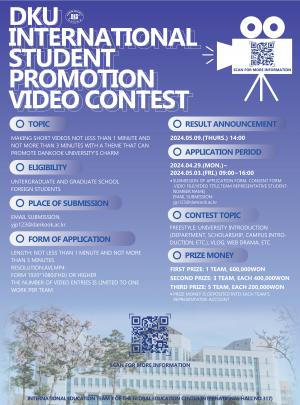Japan initiated the release of its stockpile of Fukushima-contaminated water into the sea in August, sparking international concerns and debate. They announced the plan to release the contaminated water in stages over a period of 30 years, with the first discharge occurring on August 24th. Before releasing the tainted water, Japan tried to get support for the plan from other countries by presenting scientific analyses demonstrating its safety. However, it failed to convince some neighboring countries. These nations insisted that the evidence of scientific safety that Japan presented was insufficient to guarantee the long-term protection of the region. The lack of international support made the release a contentious issue in the international community and raised anxiety within the global fisheries market regarding the potential impact of the tainted water. To ensure a better process for the next planned discharge, it is crucial to consider the broader impact of such actions on our lives and the global environment.
The origins of the Fukushima-contaminated water issue can be traced back to the catastrophic events of March 11, 2011. On that day, the Tohoku Earthquake, the fourth-largest earthquake in recorded history, occurred. The tsunami caused by the earthquake hit the Fukushima Daiichi nuclear power plant, severing its power supply and rendering the cooling of the reactor impossible. Then, the nuclear fuel in the reactor core overheated, and a meltdown occurred. Eventually, a large amount of radioactive material was leaked, and Japan has been injecting cooling water into the damaged plant ever since. Fukushima-contaminated water is a mixture of radioactive materials, groundwater, and various other substances formed during the process. In response to international concerns, the International Atomic Energy Agency (IAEA) conducted a thorough assessment and released a final report that Japan's method for discharging contaminated water met with international safety standards. Based on this validation, Japan reassured to its fishermen and neighboring countries about the safety measures it was undertaking and began releasing contaminated water through the Advanced Liquid Processing System (ALPS) on August 24. However, commitments were made to halt the discharge if the concentration of tritium exceeds 700 Bq per liter at a point within 3 km of the plant and 30 Bq per liter at a point beyond 3 km.
 |
| ▲ The Storage Tanks for Contaminated Water at the Fukushima Daiichi Nuclear Power Plant (Photo from The Japan Times) |
Before the actual discharge, the contaminated water undergoes a meticulous process. Initially, various filters in the ALPS remove about 60 kinds of radioactive materials from contaminated water. Then, the concentration of radioactive substances other than tritium in the K4 tank is monitored and diluted by mixing it with seawater. Finally, the processed water is discharged into the sea 1km away from the nuclear power plant through an undersea tunnel. A total of 7,800 tons of contaminated water, equivalent to 10 tanks, was released on September 11. By March next year, a total of 31,200 tons of water will be discharged. Overall, a total of 1.34 million tons will be released over the next 30 years.
The release of contaminated water from Fukushima has stirred diverse reactions among neighboring countries. While China, Hong Kong, and Russia strongly oppose the discharge, South Korea takes a stance of understanding, and the United States and Europe tend toward acceptance. China stands as one of the most vocal critics of Japan's decision to release it into the Pacific Ocean. Notably, Wang Wenbin, spokesperson for the Chinese Ministry of Foreign Affairs, intensely criticized the discharge as a 'selfish and irresponsible act,' accusing Japan of transferring nuclear contamination risks globally while prioritizing its self-interest over the long-term welfare of humanity. China, a major recipient of Japan's seafood exports, worth 205.7 billion yen (approximately 1.88 trillion won) in the first half of 2023, has even threatened to extend its ban on Japanese seafood imports from Fukushima to other areas to encompass the entire country. Likewise, Hong Kong and Macao have also implemented restrictions on seafood products originating from Fukushima and other Japanese prefectures. Conversely, the United States maintains a friendly stance, expressing confidence in the safety of measures. South Korea, on the other hand, while not actively endorsing Japan's discharge policy, acknowledges the authority, expertise, and representation in the field of nuclear safety of the IAEA in matters of nuclear safety. This stance has led to criticism from some progressive voices within South Korea, who argue that the government, under President Yoon Suk-yeol, may be prioritizing South Korea-Japan relations over public health concerns. In summary, the Fukushima radioactive water discharge debate has transcended its immediate context, by intricately weaving together historical grievances and the complex challenge of managing diplomatic relations with Japan.
The most common response to the news of discharging contaminated water has been concerned about marine products. Many people suggested that any problem with these products would lead to a loss of valuable food resources. Among those most deeply affected by this prospect are commoners employed in the fisheries industry. If discharging contaminated water takes place in earnest and consuming seafood naturally drops sharply, they won’t be able to make a living. Meanwhile, merchants have experienced a significant decrease in sales in Busan, where holiday seasons would typically boost business. This drop in sales, exceeding 80% is primarily attributed to the prevailing anxiety surrounding contaminated water. As a neighboring country close to Japan, most Koreans are concerned about the possibility of the destruction of an ecosystem exposed to radiation. People recognize that most essential substances in food are currently naturally sourced from in the sea, so Koreans have begun temporarily hoarding some ingredients. In China, the government had to monitor salt supplies due to a short period of hoarding, as individuals sought to secure their food sources amidst uncertainties regarding the contamination issue.
To date, expert opinions assert that the release of contaminated water will not have a significant impact on the safety of seafood. The National Federation of Fisheries Cooperatives held an “emergency meeting on contaminated water from Japanese nuclear power plants” in Songpa-gu, Seoul, on August 24. They announced that they would suspend operations if radioactive materials exceeded the established standard level in their fishery products. However, no countermeasures are proposed to reduce the loss of livelihood for impacted fishermen. Japan’s discharge plan has caused both direct and indirect damage to the fisheries industry, while the government’s safety management costs have soared. The government has set aside 369.3 billion won this year as a budget for responding to wastewater from atomic reactors. This is an increased of 129.3% compared to the previous year and would be used to purchase and stockpile seafood, revitalize consumption, monitor radioactivity, and place of origin. The Ministry of Oceans and Fisheries decided to increase the related budget by 200 billion won next year to effectively cope with wastewater concerns. In other words, the world is sharing the responsibility for Japan’s decision to discharging the contaminated water to Japan.
The Dankook Herald interviewed Professor Lee Byung-sik of the Dept. of Nuclear Integrated Engineering for accurate information on the controversial Fukushima-contaminated water. Professor Lee emphasized that the most important thing is how effectively they were at removing radioactive pollutants from the large amount of contaminated water that originated from the Fukushima nuclear accident. Japan has indeed employed ALPS to eliminate various contaminants but has left tritium untreated. This decision is based on the unique nature of tritium, a radioactive isotope of hydrogen, which cannot be effectively removed due to its water-like behavior. When asked about the claim that diluting this substance with water can prevent the side effects of radioactive materials, he replied that the absolute total amount of radioactive materials remains unchanged, but the natural amount of tritium generated annually is about 200 grams, whereas Japan is releasing 0.4 grams, which is a small amount compared to the annual amount. He also stated there are no other effective solutions available. Discharging it in liquid form had advantages and disadvantages, but it was the most realistic and profitable way to solve the problem. Professor Lee said, “They decided that the discharge of contaminated water would not be a problem, and they are continuing to monitor it little by little. If a significant increase in tritium levels is detected, the discharge will be halted immediately, with alternatives sought by identifying the cause.” Addressing concerns about potential routes of contamination affecting people during the discharge, he stated that seafood will be most affected, but due to the relatively low levels of tritium, the impact on our waters is about one in 100,000, which is not an experienceable figure in our daily lives. Professor Lee highlighted the distinction between “contaminated water” and “treated water.” Currently, in Japan, the “term treated water” is already used instead of contaminated water. He also cautioned against fear-mongering posters and encouraged vigilance in assessing information. Finally, the lesson learned from this situation he believes is to focus more on the safety management of nuclear facilities to prepare for fundamental problems. After the Fukushima Daiichi nuclear disaster, natural disasters have been reevaluated as serious threats, and the safety design of nuclear power plants is being strengthened.
As Japan claimed that the discharge of contaminated water was scientifically safe, they blamed the anxiety expressed by the international community as the source of problems. Although the scientific stability of the water is regulated, many people still feel anxious about its release. It is evident that more is needed than scientific validation to address public anxieties. Accordingly, Japan needs to ensure that there is sufficient discussion on the discharge to reach a consensus in the international community and consider the problems that could arise in the aftermath of the discharge of contaminated water in other countries. In addition, the Korean government should also relieve the public of their concerns and prevent the exacerbation of social and economic issues related to this situation. In doing so, it can contribute to promoting a sense of security and stability among its citizens.
이은희, 정영훈, 김주연, 김영준, Dinh Phuon dankookherald@gmail.com

 Vote for the Campus Brand Naming!
Vote for the Campus Brand Naming!

![[Campus Magnifier] Let's Surf the Library!](/news/thumbnail/202404/12496_1765_4143_v150.jpg)




